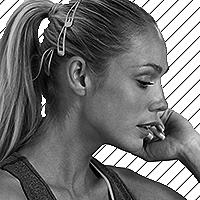I’ve never met a surfer who said, “Yeah, I don’t need to do yoga. I never have any aches and pains, my lower back feels amazing and my hips are super supple!” What I usually hear is that surfers want to do yoga but they don’t know what to do. They often don’t have a lot of time to dedicate to it and they are concerned that consistent practice could get expensive.
A few years ago, I started working with professional mountain bikers who suffered crippling lower back pain from throwing themselves down mountains at high speed. When I moved to the coast and started teaching yoga to surfers, I quickly realised that each extreme sport creates its own particular set of muscular imbalances and postural misalignments. For surfers that is usually compression at the lower back, tight hips and hamstrings, a closed chest, and pain in the neck and shoulders. Luckily, yoga is great at undoing these imbalances and it takes a lot less time than you might think. The key is to do it little and often.
The 15-Minute Routine
I designed this sequence specifically for surfers. After spending all day in the water, I know you don’t always have an hour or so free to get to a class, and that is the beauty of this routine. If you are able to get into the habit of practicing it 3-4 times a week, 15 minutes is all you need. It will alleviate pain in achey neck and shoulders, increase flexibility in your hips and hamstrings, open up your chest and lengthen out your spine. You will notice a profound improvement in your suppleness, stamina and skillfulness on the board right away.
Take It Easy
If you apply too much force to a stretch, your body’s innate reflex reaction will prevent your muscle from lengthening beyond a safe range. However, it is possible to override this protective stretch reflex and cause yourself harm. Here are some pointers to keep in mind:
-Never try to use force to increase a stretch. Instead, deepen your breath and relax into it.
-Listen to the alignment cues I give you. For example, to bend your knees in forward bend.
-Differentiate between sensations of discomfort and pain. If you do experience any amount of pain, back off from the stretch and trust that your flexibility will increase gradually over time with consistent practice.
-Remember that it has taken a lifetime for tightness to build up in your muscles, so be patient and kind to your body. It’s the only one you have.
Modifications
There are some poses in this sequence that are fairly advanced and require a certain level of flexibility. This is intentional. I want to give you a routine that you can grow into, so you can continue to improve gradually and consistently over the next few weeks and months.
On your way to mastery, remember that you can always modify the poses. Stop and start the video as much as you want to and go through it at your own pace. I like to move my body from side to side in each of the postures until I feel the release where I need it.
Here are some specific suggestions:
-If you are uncomfortable sitting cross-legged in Easy pose, sit your bum on the edge of a cushion to raise your hips up.
-Bend your knees as much as you need to in Downward Dog so that your spine is flat and your lower back does not bulge.
-In Forward Fold, bend your knees to release pressure at your lower back. In this sequence, this pose is a spinal, not a hamstring stretch.
-If you cannot reach your fingers to the mat in Bended Crescent Lunge, rest them on a book or low table.
-Stay up on your palms in Lizard until you can come down onto your elbows.
-In Pigeon, put a cushion under the hip of your bent leg for support.
If you would like to download this routine, you can find it at Yoga15‘s Vimeo page.

